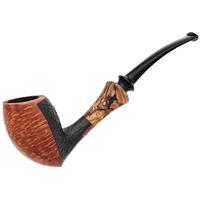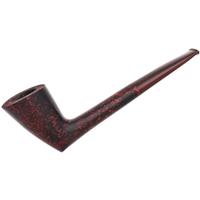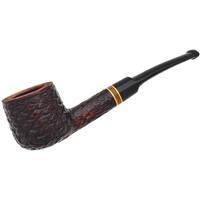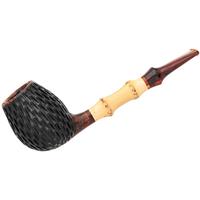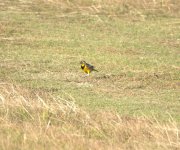Wildlife Photography
- Thread starter Briar Lee
- Start date
You are using an out of date browser. It may not display this or other websites correctly.
You should upgrade or use an alternative browser.
You should upgrade or use an alternative browser.
I'm not being sexist here, simply stating anecdotal facts, women thoroughly enjoy nurturing shots. Hell of a market.
A correct camera and lens combination, along with shutter speed, aperture, pixel size (not number of pixels) and ISO settings, on-board software, certainly contribute to the quality of a shot. But, what determines a great shot is, what is between the shooter's ears and the photographer's ability to "see" the picture, only capturing the information that contributes to the shot. Great shots are taken by seasoned photographers using the correct gear, the correct settings and lens together with an "eye" developed through years of practice, years of critical evaluation and so forth. You can't get the shot you want until you can "see" the shot before you ever raise the camera to your eye.
How many folks do you know who arrive home from a "once in a lifetime trip" look at many of the photos and wonder what they were thinking (seeing?) when they took many of the shots. How many shots are washed out due to light bouncing around inside the lens barrel because they thought the lens hood wasn't necessary when shooting around water and snow? Using the equipment at hand, phone, grab camera, whatever is a waste of time until you see what captured your attention and decide how best to isolate that subject is what makes the difference between a "snap shot" and a great picture.
I won't get into the Canon v Nikon debate. It would be too technical/boring for most here. Sufficed to say Nikon is the only 35mm digital system which meets or exceeds my demands.
Curious as to what keeps Sony off of that list in the full frame market. Thanks!
Sony is great manufacturer of cameras. Nikon has used Sony sensors in many models off and on for years. Very innovative, that company. Pretty much pioneered the digital mirror-less revolution. There are just a few things Nikon does, in my and others' opinions, better. This is particularly true with Nikon's on-board software, "Expeed", the processing engine, combined with the data collecting, large pixels. Probably the most significant differenceCurious as to what keeps Sony off of that list in the full frame market. Thanks!
Wildlife photography requires working in snow, rain and windy, dusty and otherwise miserable conditions. The glass and bodies are often mishandled by ground crews and even the photographer ... me. Nikon has some great remote gear available for when the camera and lens are mounted in trees or otherwise placed so as to prevent physical contact when shooting. I could on. So, 40 years familiarity/trust, and some significant, to me, differences, one of which is decades of consistency in builds, the ability to use old bodies with new lenses and very old lenses in newer bodies with a simple adapter, are some of the reasons for my preference.
I accidently omitted, Nikon has a section in California dedicated to qualified working photographers for repairs. Send in a lens/body for cleaning or repair and one can arrange a loaner from them.
Even more ruminations on cameras.
In the days of film, you needed to develop the negatives.
All modern digital cameras use a card, which can be inserted into a gadget called a dongle, which plugs into a computer or a phone, and zzzzziiippppp the files load.
Then there are programs like Google Photos and others that upload those files to the mysterious internet cloud, wherever that is.
But to share them, you can email them or post them online, or print them out.
There are many brands of capable and excellent printers, but again it seems Canon makes the best, good cheap ones.
Like the old Gillette razors, they nearly give away the printers and make their profit from ink cartridges.
Another thing good to know about all modern cameras is you have the option to shoot in RAW. What that does is record and transfer all, 100%, of the raw data onto your computer. Then you use some program like Lightroom to “Photoshop” the images. All the cameras makers have a free RAW converter program. Shooting in RAW allows shadows to be lifted and highlights recovered often not possible in the standard JPEG output, which is what every digital camera has used for over 20 years as the basic program to convert digital data into images.
Olympus, Panasonic, Fuji, Sony, Pentax, Nikon and Canon all manufacture enthusiast grade cameras and lenses.
Take your pick. They are all good. Pay more and you get better, although like other products another dollar spent might not result in a dollar better camera or lens, but a fractional part of a dollar better.
They look like cameras, but in reality you are buying a box that accepts lenses.
The bodies get replaced with snazzier models every few years, but a good lens is more of a long time purchase, but only for your brand of box it mounts to.
In the days of film, you needed to develop the negatives.
All modern digital cameras use a card, which can be inserted into a gadget called a dongle, which plugs into a computer or a phone, and zzzzziiippppp the files load.
Then there are programs like Google Photos and others that upload those files to the mysterious internet cloud, wherever that is.
But to share them, you can email them or post them online, or print them out.
There are many brands of capable and excellent printers, but again it seems Canon makes the best, good cheap ones.
Like the old Gillette razors, they nearly give away the printers and make their profit from ink cartridges.
Another thing good to know about all modern cameras is you have the option to shoot in RAW. What that does is record and transfer all, 100%, of the raw data onto your computer. Then you use some program like Lightroom to “Photoshop” the images. All the cameras makers have a free RAW converter program. Shooting in RAW allows shadows to be lifted and highlights recovered often not possible in the standard JPEG output, which is what every digital camera has used for over 20 years as the basic program to convert digital data into images.
Olympus, Panasonic, Fuji, Sony, Pentax, Nikon and Canon all manufacture enthusiast grade cameras and lenses.
Take your pick. They are all good. Pay more and you get better, although like other products another dollar spent might not result in a dollar better camera or lens, but a fractional part of a dollar better.
They look like cameras, but in reality you are buying a box that accepts lenses.
The bodies get replaced with snazzier models every few years, but a good lens is more of a long time purchase, but only for your brand of box it mounts to.
Simply not true! You are buying a "light tight" box which contains the all important "sensor" and a processing engine for the data, motors to drive the focusing, in some cases the "length" of the lens, conduits for the data transfer to the "card" and etc. In most cases the "box" and what's in it determines the quality of your picture more than the glass in front does. Most noted manufacturers make/provide "decent" glass.They look like cameras, but in reality you are buying a box that accepts lenses.
The simple "light tight" box, which contained the shutter and held the film flat, died out with the digital era.
Anyone wanting a simple, light tight box will need to build a "pinhole camera. A lot of enormous fun shooting with a "pin hole". One can achieve some very nice pictures with such and amaze friends and acquaintances. The depth of field will amaze you. Might even ruin your shot. A lot to be said for shallow depth of field when isolating a subject, making it "jump" out at you.
A better description may be you’re buying a little super computer inside a camera shaped box with a shutter (or substitute for a shutter).Simply not true! You are buying a "light tight" box which contains the all important "sensor" and a processing engine for the data, motors to drive the focusing, in some cases the "length" of the lens, conduits for the data transfer to the "card" and etc. In most cases the "box" and what's in it determines the quality of your picture more than the glass in front does. Most noted manufacturers make/provide "decent" glass.
The simple "light tight" box, which contained the shutter and held the film flat, died out with the digital era.
Anyone wanting a simple, light tight box will need to build a "pinhole camera. A lot of enormous fun shooting with a "pin hole". One can achieve some very nice pictures with such and amaze friends and acquaintances. The depth of field will amaze you. Might even ruin your shot. A lot to be said for shallow depth of field when isolating a subject, making it "jump" out at you.
And you are correct about lenses. There are slow lenses, but no really bad lenses.
And no matter how fancy your little box, it catches light and has three parameters, shutter speed, ISO and aperture,,,provided it’s in focus.
Our little phones add artificial intelligence to the exposure triangle.
My son is texting us photos of him out in Utah riding dirt bikes.
View attachment 223968View attachment 223969View attachment 223970View attachment 223971View attachment 223972A camera is such a toy, such a toy.
It is no toy in the hands of a good photographer!
Hands up: Who chimps all the time?
Hands up: Who chimps all the time?
Try the book Villem Flusser “Towards a Philosophy of Photography”. The Brazilian philosopher describes the toy character of the camera as nucleus to the now digital age, the illiteracy in “reading” technically produced pictures and films and aspects of freedom while moving through programs.
Though it was written on the rise of computer age and in the 1980s his writings even catch up with and have foreseen today’s phenomenon of AU. Interesting read.
Though it was written on the rise of computer age and in the 1980s his writings even catch up with and have foreseen today’s phenomenon of AU. Interesting read.
Leica makes extremely high dollar digital cameras, mostly with full manual operation as I understand. Leica caters to photographers who want to take control of the process. Some models don’t even have color, only monochrome.
And the wizardry of this iPhone with three tiny lenses and who knows what computer intelligence is on the other end of the point and shoot spectrum.
I like something sort of in the middle, you know?
As stated earlier most of photography lies in the six inches between the photographers ears.
The camera slung around your neck is a tool.
And, let’s admit our vanity, it’s also a toy.
Everybody likes cool, shiny, toys.
My Canon 7D Mark II is indeed a very cool toy, brimming over with hidden autofocus and metering technology, but it’s big, heavy, and makes me look like a private eye or gubbermint agent when I’m out and about with it among people.
One of my favorite cameras is my 2010 era Olympus E-PL1, with a f1.8 Panasonic 20mm lens. The body is worth $50 and the lens $150. I could mount my 75-300mm Olympus lens, or a cheap 40-150 Oly lens, and shoot wildlife with it. I have a much more capable Olympus OMD M-5 Mark II for wildlife, but it would work well.
One evening about dusk there was a parade in front of my office, and I grabbed my PL-1 with fast pancake lens and had a blast.
View attachment 224065View attachment 224066View attachment 224067View attachment 224068
When I wear an Olympus rangefinder style camera around my neck I look like a tourist or a proud parent.
Anybody with about $125 can buy a complete, ready to go, PL-1 with kit lens.
I know of no better camera to start an interest in photography.
View attachment 224069View attachment 224070View attachment 224071
And the wizardry of this iPhone with three tiny lenses and who knows what computer intelligence is on the other end of the point and shoot spectrum.
I like something sort of in the middle, you know?
As stated earlier most of photography lies in the six inches between the photographers ears.
The camera slung around your neck is a tool.
And, let’s admit our vanity, it’s also a toy.
Everybody likes cool, shiny, toys.
My Canon 7D Mark II is indeed a very cool toy, brimming over with hidden autofocus and metering technology, but it’s big, heavy, and makes me look like a private eye or gubbermint agent when I’m out and about with it among people.
One of my favorite cameras is my 2010 era Olympus E-PL1, with a f1.8 Panasonic 20mm lens. The body is worth $50 and the lens $150. I could mount my 75-300mm Olympus lens, or a cheap 40-150 Oly lens, and shoot wildlife with it. I have a much more capable Olympus OMD M-5 Mark II for wildlife, but it would work well.
One evening about dusk there was a parade in front of my office, and I grabbed my PL-1 with fast pancake lens and had a blast.
View attachment 224065View attachment 224066View attachment 224067View attachment 224068
When I wear an Olympus rangefinder style camera around my neck I look like a tourist or a proud parent.
Anybody with about $125 can buy a complete, ready to go, PL-1 with kit lens.
I know of no better camera to start an interest in photography.
View attachment 224069View attachment 224070View attachment 224071
Looks like a Meadowlark, eastern I presume. I don’t know that I’ve ever seen one.
Yes, caught him in the Outer Banks last November. First one I have seen in person.Looks like a Meadowlark, eastern I presume. I don’t know that I’ve ever seen one.
That’s awesome! I’ll keep an eye out next time I’m down there, thanks!Yes, caught him in the Outer Banks last November. First one I have seen in person.



